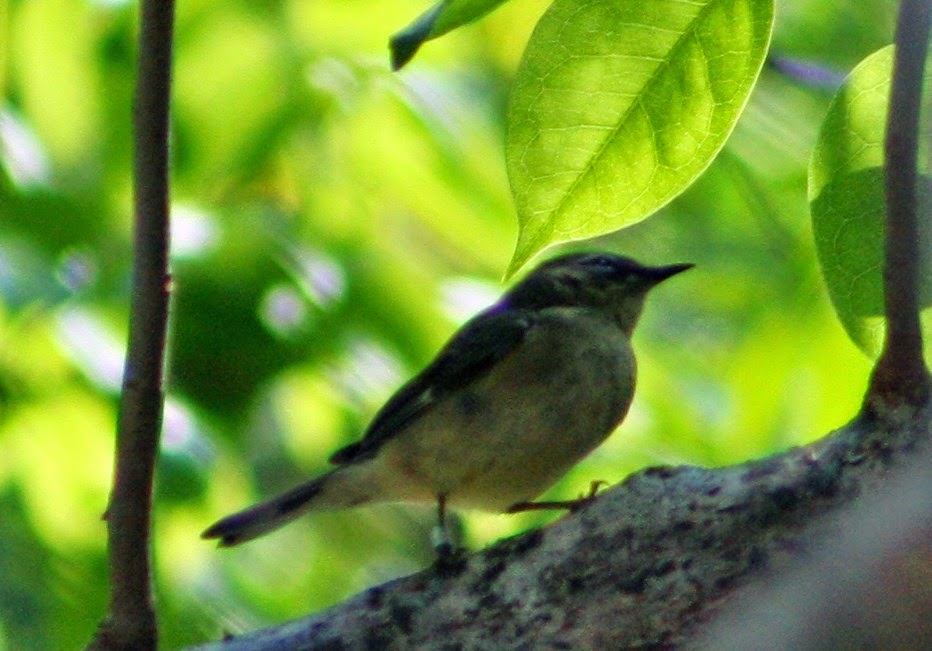Bill LaFramboise, Nancy Price, and I got the rare opportunity to witness banding of Red-cockaded Woodpeckers (RCWs) at DuPuis Wildlife Management area with biologist Valerie Sparling. Having a federal banding permit allowed me to assist her and get up close views. Nancy Price graciously took lots of photos.
Red-cockaded Woodpeckers are an endangered species that has been relocated to Dupuis from other areas that have good production of young. This spreads out a population so that any natural disaster will not decimate the entire species. DuPuis is at the southern edge of the natural range of this species in FL and learning as much as possible about how they adapt, move from birth cluster to elsewhere, and more is assisted by color-banding of individuals. It is very difficult to capture and band adults so chicks are banded. The optimal age at DuPuis is nine days old. At this age, feathers are just starting to grow so this prevents damage (bending) to larger feathers of an older chick. The chick is old enough to cope with the process. The leg length is optimum to add the proper number of bands that prevents future problems.
From the great care taken by Valerie, our own observations of the chicks being very active, and from the adults feeding the nestlings immediately after we left, we are assured that this process was well done.
It takes a long time for RCWs to excavate a nest cavity. Artificial cavities are placed in several appropriately sized trees forming a family cluster. The cluster provides multiple cavities for roosting and nesting. Young adults were transferred to these cavities in hopes that they would set up nesting. If cavities were not available, the likelihood of a new pair being transferred and taking several years to excavate a new hole is too low. They would be more likely to leave and not find an appropriate area to feed and survive.
Red-cockaded Woodpecker - adult feeding at artificial cavity
Photo by Nancy LaFramboise
All of the remaining photos are by Nancy Price - many thanks Nancy! Most were taken May 10 when there was one chick. The last photo was from May 11.
If you have been reading the blog and the pages on Painted Bunting color banding the process with these chicks is much the same. The birds are brought from the cavity and are banded.
Joint effort of applying federal band,
color bands are applied,
wing is measured,
chick is weighed,
data are recorded,
and then the two chicks are ready to return to nest.
After they were returned we were able to hear the feeding calls from the nest box indicating all was well. Parent birds came to the boxes and fed them (first photo). After a rest for the next 10 days, Valerie will continue to monitor the nests. She hopes to be able to determine the sex of the birds and will monitor them until they fledge.
We very much appreciate the opportunity to do this with Valerie. It was a once in a life time experience!












.JPG)







